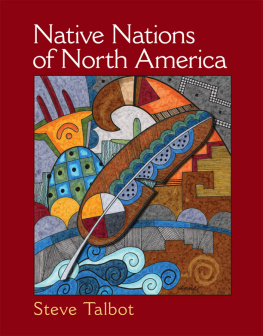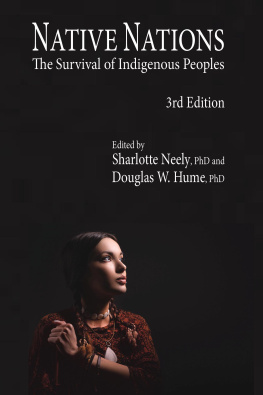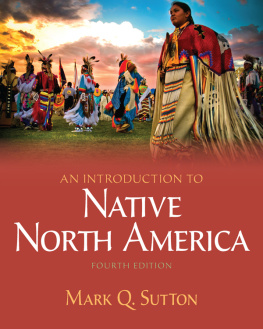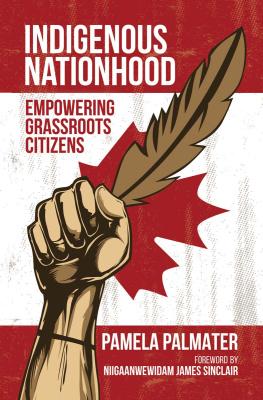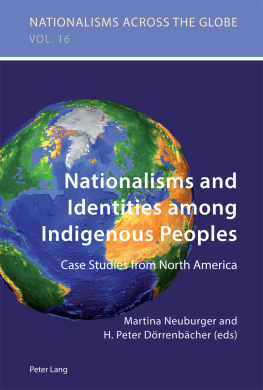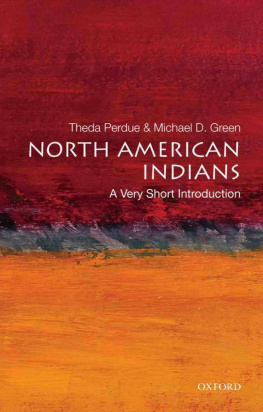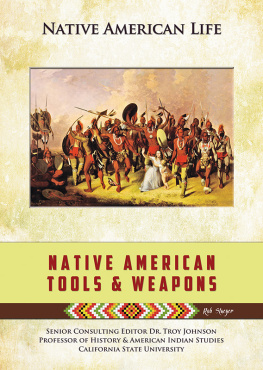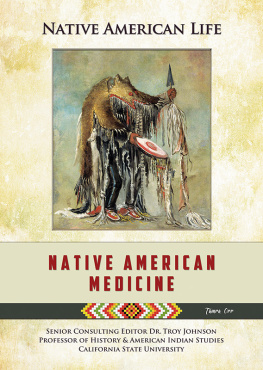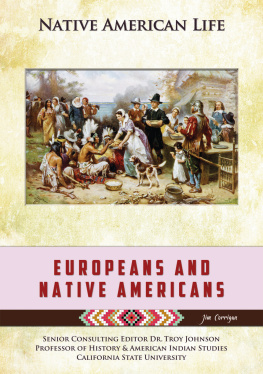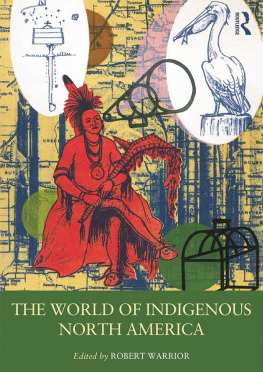
Native Nations of North America
An Indigenous Perspective
Steve Talbot
Oregon State University

BostonColumbusIndianapolisNew YorkSan FranciscoUpper Saddle River AmsterdamCape TownDubaiLondonMadridMilanMunichParisMontralToronto DelhiMexico CitySo PauloSydneyHong KongSeoulSingaporeTaipeiTokyo
Editor in Chief: Ashley Dodge
Publisher: Nancy Roberts
Editorial Assistant: Molly White
Marketing Coordinator: Jessica Warren
Managing Editor: Denise Forlow
Program Manager: Mayda Bosco
Project Manager: Nitin Agarwal/Aptara, Inc.
Senior Operations Supervisor: Mary Fischer
Operations Specialist: Eileen Corallo
Art Director: Jayne Conte
Cover Designer: Suzanne Behnke
Cover Artwork: Gerald Dawavendewa/Fourth World Design
Director of Digital Media: Brian Hyland
Digital Media Project Management: Learning Mate Solutions, Ltd./Lynn Cohen
Digital Media Project Manager: Tina Gagliostro
Full-Service Project Management and Composition: Nitin Agarwal/Aptara, Inc.
Printer/Binder: Courier Corp.
Cover Printer: Courier Corp.
Text Font: Palatino LT Std
On the cover: A sacred eagle feather carries a circle representing the four directions with clouds holding life-giving rain. Behind the feather are symbols of corn, birds, water and rain, dragonfly, land and culture. It is a representation that all Native cultures are interconnected with the world and must be treated with respect and dignity.
Credits and acknowledgments borrowed from other sources and reproduced, with permission, in this textbook appear on page .
Copyright 2015 by Pearson Education, Inc. All rights reserved. Printed in the United States of America. This publication is protected by Copyright and permission should be obtained from the publisher prior to any prohibited reproduction, storage in a retrieval system, or transmission in any form or by any means, electronic, mechanical, photocopying, recording, or likewise. To obtain permission(s) to use material from this work, please submit a written request to Pearson Education, Inc., Permissions Department, One Lake Street, Upper Saddle River, New Jersey 07458 or you may fax your request to 201-236-3290.
Many of the designations by manufacturers and seller to distinguish their products are claimed as trademarks. Where those designations appear in this book, and the publisher was aware of a trademark claim, the designations have been printed in initial caps or all caps.
Library of Congress Cataloging-in-Publication Data
Talbot, Steve.
Native nations of North America : an indigenous perspective / Steve Talbot.
pages cm
Includes index.
ISBN-13: 978-0-13-111389-3
ISBN-10: 0-13-111389-5
1. Indians of North AmericaHistory. 2. Indians, Treatment ofNorth AmericaHistory. 3. Indians of North America Ethnic identity. 4. Indian philosophyNorth America. 5. Self-determination, NationalNorth AmericaHistory. I. Title.
E77. T25 2014
970.004'97dc23
2013047761
10 9 8 7 6 5 4 3 2 1

ISBN-13: 978-0-13-111389-3
ISBN-10:0-13-111389-5
This book is dedicated to the memory of
Jack D. Forbes
19342011
Mentor, Colleague, Friend
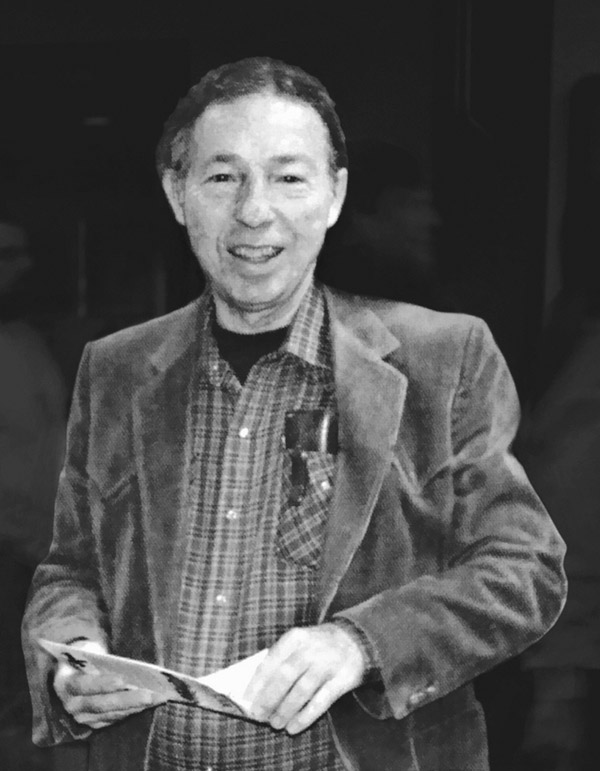
Photo courtesy of Carolyn Forbes.
Contents
My Friend Jack Reminiscences
Steve Talbot
In February, 2011, Jack Forbes passed to the Spirit World, but his immense academic contribution to Native American and Indigenous Studies will remain an enduring legacy. Several Indian publications were quick to include tributes to him, and undoubtedly there will be more as his academic work is fully noted and evaluated. In reading the initial tributes, however, I was struck by the omission of his early contributions to our paradigm. Jack was a major founder of the field of Native American Studies in California, and an important contributor to the discipline as a whole. The following reminiscences will serve to demonstrate this assertion.
I was Jacks project assistant in the multicultural program at the Far West Laboratory for Educational and Research Development from 1967 to 1969. This government facility was located in the historic Claremont Hotel in Berkeley, California, and Jack was one of its four directors. At the Lab, he wrote ethnic handbooks, including Native Americans in the Far West as a pilot project for public schools. Jacks academic training was in history and anthropology, but he took a revisionist approach to these disciplines and employed ethnohistory when it came to the subject of Native peoples. This is demonstrated in his early works, among which are Apache, Navajo, and Spaniard (1960), The Indian in Americas Past (1964), The Yumas of the Quechan Nation and Their Neighbors (1965), Nevada Indians Speak (1967), and Native Americans of California and Nevada (1969).
For a time, the national headquarters of the National Indian Youth Council (NIYC) was also located at the Claremont Hotel. The NIYC was an early Indian protest organization, a forerunner of the 1960s Red Power Movement. Jacks typist was the wife of a NIYC officer. Jack interacted with NIYC Indian leaders whenever they were in town. Indian elders from the San Francisco Bay area urban community also visited Jack at the Lab. I believe that it was about this time that he began working with Dave Risling and the California Indian Education Association. It was at the Lab where I first met Lehman Brightman, an Indian student at UC Berkeley, who later headed up the United Native Americans (UNA). Jack organized the founding meeting of UNA, and helped Lee, myself, and others to produce the UNA publication Warpath.
Jacks daily routine at the Far West Lab often began in the morning at a nearby caf where he routinely wrote fifteen to twenty manuscript pages daily for his various academic projects. Remarkably, his manuscript drafts required little if any editing. He displayed a broad knowledge of Indigenous peoples worldwide. One of the tasks he assigned to me was to undertake a comparative survey of the worlds Indigenous peoples and national education policy, thereby anticipating the founding of the Native American and Indigenous Studies Association (NAISA) several decades later in 2009.
When I entered the Ph.D. program in anthropology at UC Berkeley in 1968, I continued my association with Jack. On the Berkeley campus he helped the Indian students liberate a room where they could meet. One of the organizing meetings for the Indian student occupation of Alcatraz in November, 1969, took place in this room. During the Third World Strike for an ethnic studies college at UC Berkeley, Jack met with student strike leaders to draft courses for the proposed curriculum. He worked with Berkeley Indian students Patty (Silvas) LaPlant, LaNada (Means) Boyer, among others, to found a Native American Studies (NAS) program on the Berkeley campus. Lehman Brightman (Lakota-Creek) became the first program coordinator.
One of Jacks Indian courses was Native American Liberation, which I taught as a teaching associate in anthropology at UC Berkeley. The Indian students, about one-third of the class, left in the middle of the 1969 Fall term to occupy Alcatraz Island. The course content included Jacks research on Alcatraz concerning the history of persecution and imprisonment of Indian freedom fighters in the past. One of the students in a class report wrote: We considered many plans, many programs. We felt the only positive way to create self-determination was to do it.
Next page
